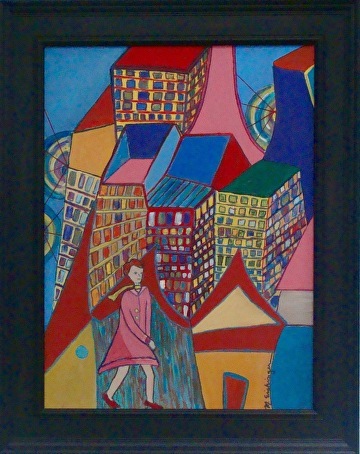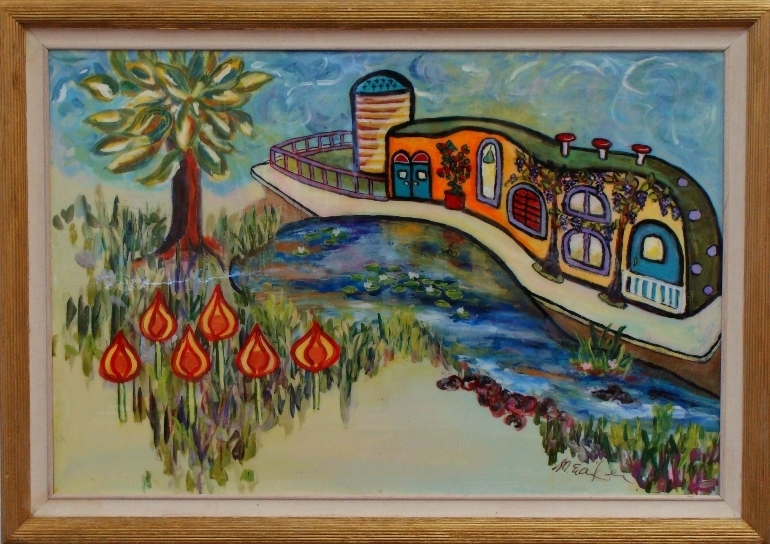
Holland has robust multi-generational co-housing housing complexes that provide social, recreational and personal space for their residents.

Mega houses for the wealthy fly in the face community needs for affordable housing. They are built in gated communities or on land that leaves the inhabitants isolated from the world around them.
Relational Worldview
According to social worker Terry Cross, there are two predominant world views, linear and relational. European and American cultures are rooted in the linear model based on the idea that cause comes before effect. To solve a problem linearly you identify it, treat it and observe the result. A relational model differs in that it is based on harmony. It views life as a continuous balancing act between interrelated influences that include the collective thinking of the culture. Its goal is to meet the needs of the community, not just the individual. The relational model seeks balance between four elements, context (culture, community), mind (cognitive and emotional processes), body (genetic, gender, condition, health), and spirit (learned teachings, metaphysical and innate, both negative and positive). Cross gives an example of how the model helps individuals.
“Death is an example of an event that threatens harmony. When we lose a loved one, we feel grief emotionally; physically, we may cry, lose our appetite, or not sleep well. However, spiritually, we have a learned positive response, a ritual, called a funeral. Usually, such events are community events, so the context is changed. We bring in relatives, friends and supporters. In that context, we intellectualize about the dead person. We may recall and tell stories about him or her. We may intellectualize about death or be reminded of our cultural view of that experience. Physically, we touch others, get hugs and handshakes; we eat, and we shed tears.
“These experiences are interdependent and play off one another in multi-relational interactions that, if successful, allow us to resolve the grief by maintaining the balance. If we cannot, then, in a Western sense, we are said to have unresolved grief or, in some tribal cultures, to have a ghost sickness or to be bothered by a spirit. Different world views often use different conceptual language to describe the same phenomenon.” A person can only move on if he or she returns to a state harmony.
The relational thinking is gaining traction as a tool to use in solving larger societal problems. Consider environmental issues, for example. Linear reasoning moves from: A causes B causes C causes D and so on. This approach favors capitalism with its goal to make money for the individual and increase GDP for the country. Environmental issues through a relational lens explores competing interests to see what it would take to bring them to harmony. It’s a search to balance personal earnings with clean drinking water, global temperatures, unpolluted fish in the oceans, adequate food production on land, sources for energy for transportation, home and business use, clean air and a fair distribution of property. Balance takes into account that human beings and animals share the earth with survival depending on a symbiotic relationship. In a relational view, there is no place for capitalism and colonialism that is designed to keep people in poverty. Harmony can only be achieved when all people and the environment are in balance.
Transitioning economic models that are primarily based on the rights of the individual to those of the greater community is not easy. Our country is imbedded in linear thinking that rewards personal achievement based on hard work and predestination. The founders, influenced by John Calvin’s preaching, went a step further and turned his religious thoughts into a justification for excessive wealth. Calvin was a theologian, not an economist, and his sermons were more humanistic than generally acknowledged. Unfortunately, ideas of predestination led to many to accept the notion that those with capital are marked favorably by God. Communities of haves and have nots became tolerated as a just part of American society. Today, the “have nots” are growing at a faster rate than ever before, weighting the scale with poverty, discord and ignorance.
Despite seeing so much societal degradation, I remain an optimist, recognizing that a great many people understand how unjust the world has become. Many are trying to change the current paradigm, or at least bend rules that keep the ecology in an unbalanced state. Despite the greedy people splashed over the news, I see signs for restoring social and environmental harmony. I hear people talk angrily about the unbridled wealth and power of just a few and hear them devising plans to restore equity.
It takes a long time to change the way a culture thinks. Eventually, however, most do evolve with changing times. Look around and you will see that your community no longer resembles that of your childhood. Take notice of the changes. Do you have friends who tune into Marie Kondo’s program to de-clutter. Pay attention to the millennials who value experiences over possessions. Observe that more people are leaving their cell phones tucked out of sight during meals. Ask yourself, why youth under thirty are purchasing vinyl records and changing their diets to organic, plant based foods. Note how younger generations easily accept sexual, religious and racial differences. Notice that it is schoolchildren who are leading the marches for gun safety and a sustainable environment. Study the slow movement, a cultural shift that promotes a slower pace of life in all areas. One branch of the movement is slow technology which, according to technopedia, is “designed to to curb some of the damaging effects of excessive technologies in human life, primarily through promoting slower or less extreme interactions with certain technologies. In general, the slow technology movement seeks to alter how humans interact with technologies including mobile devices, social media, email and other relatively recent innovations that tend to be highly addictive, or at least consume a lot of time.“
Younger generations are bringing about systemic changes that encourage face-to-face relationships and living lightly on the planet. It will be interesting to see if Amazon, Facebook, Twitter and Instagram go the way of so many media moguls or if they will evolve? Ten years ago who would have thought eBay’s traffic would decline? The slow movement says it’s time to get bored, for that brings about inventiveness. I’m not bored and probably not as inventive as I was when young, but I sure am having a blast watching thoughtful young adults conceive of ways to save society.
References:
Cross, T. ( 1997) Understanding the relational worldview in Indian families. Oregon State University.http://oregon.4h.oregonstate.edu/sites/default/files/information/staff/inclusive/RelationalWorldView.pdf
Feuerherd, P (2017) John Calvin: The Religious Reformer Who Influenced Capitalism. Daily. retrieved from https://daily.jstor.org/
Slow Technology Movement .Technopedia.retrieved from web (2019) site https://www.techopedia.com/definition/28641/slow-technology-movement
SlowTech, retrieved from web site 2019 at http://slowtech.org/
